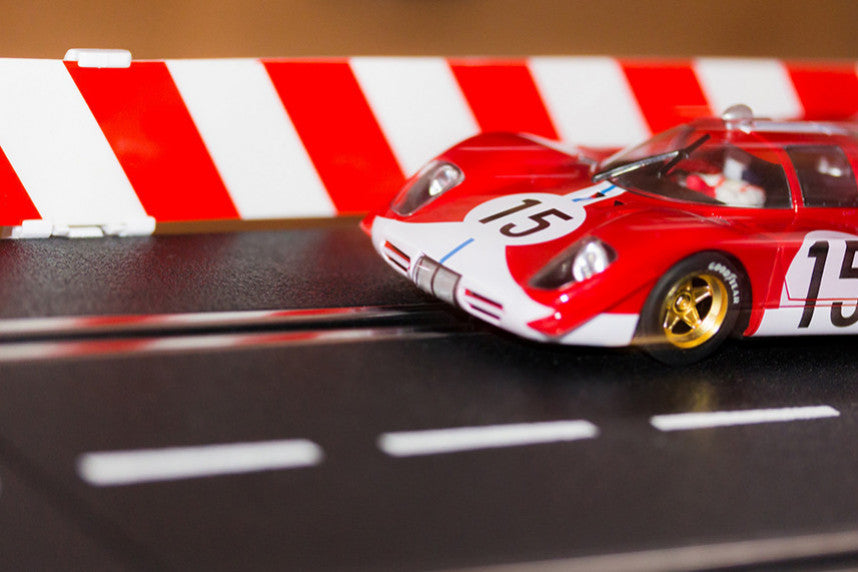What is Slot Racing?
Etymology of slot racing
“ Slot racing ” is an English term used by all model enthusiasts to designate miniature car races on electric circuits . To put it more simply, we can say that slot racing works like the little electric train but with miniature cars.
“Slot” means “groove” in English, it designates the groove guide system via a guide pad . The car is supplied with electricity by friction thanks to two metal strips (called "brushes" or "braids") located on each side of the groove. With slot racing, we can see many types of miniature vehicles such as cars, trucks, karts or motorcycles compete against each other.
On the circuit side...
The electric racing circuit is made up of rails (which can be straight or curved to form turns, hairpins, chicanes, loops, etc.) but also track elements such as launch ramps, towers, rails for changing lanes, safety barriers, jumping boards, etc. To help you plan your circuit there is free software like Ultimate Racer .
Miniature races on an electric circuit
The goal of slot racing is to be able to organize miniature car races between drivers (the number is determined by the number of slots available). With the arrival of digital tracks and numerous electronic accessories , slot racing has become a motorsport which has many fans and a very active community of players.
Analog circuit vs. digital circuit
Slot Racing offers two types of electric racing circuits : those with an analog power supply and those with a digital power supply (in the latter case, we also speak of digital power supply).
The analog circuit
The analog road course is the cheapest and most basic track in Slot Racing. The miniature cars are controlled via electrical stimuli sent into the rail. You can drive as many cars as there are rails and, if you position two cars in the same rail, they will behave exactly the same. Basically, you can only run one vehicle per lane and differentiation is not possible. While many manufacturers offer circuits with up to 8 tracks (i.e. 8 players), some enthusiasts regret unrealistic overtaking and difficulty balancing the length of the rails.
The digital circuit
The digital circuit is a slot circuit with more advanced operation. The electrical signal that is sent down the rails is coded with up to 16 different destination addresses on the rail. Each car has an address which is linked to the control lever. This technology therefore allows several competitors to drive their cars on the same rail (with different behavior for each vehicle). Simply install passing rails to change lanes and overtake.
Slot Racing FAQ
Remove or leave the magnet?
A magnet is installed on the lower part of the slot car chassis in order to pin the front of the car to the metal strips. This device is put in place by manufacturers to improve road holding and ground guidance for beginners and children. For more experienced drivers, it is possible to "free" the car from the magnet in order to enjoy more realistic driving.
Be careful, removing the magnet can be confusing at first. The car can easily go off the track and you have to be patient to learn how to drive it. You can also change the rear tires and add ballast in place of the magnet to improve stability.
I cannot close the loop of my circuit
It may happen that the electrical circuit does not close . That is to say that the last two rails supposed to close the electrical loop are not aligned. In this case, we recommend changing the length of the straight line rails to half straight lines or quarter straight lines.
It is important to know that you must not force it to close the circuit as this risks creating micro-spaces between the joints of the rails, which will quickly wear out the car braids (in one day).
I have false contacts on my circuit
False contact is mainly due to play between the electrical rails. The contact pins then move in the housing, which hinders the passage of electric current . Sometimes it is the mounting brackets that are not securely fitted to the rail that can cause the nipples to play. The fixing brackets can be tightened by forcing them with a flat screwdriver.




